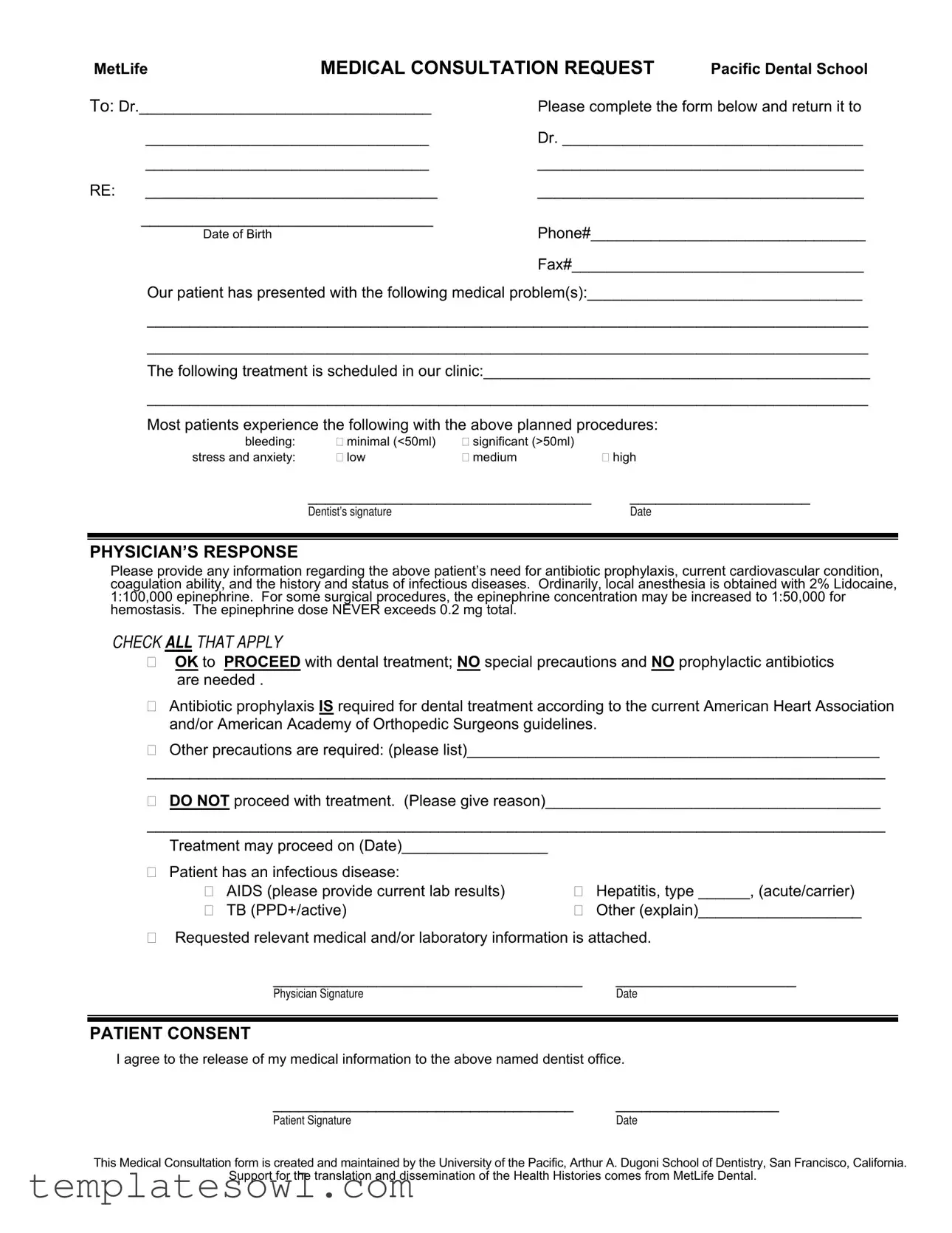
MetLife |
MEDICAL CONSULTATION REQUEST |
Pacific Dental School |
To: Dr.__________________________________ |
Please complete the form below and return it to |
|
_________________________________ |
Dr. ___________________________________ |
|
_________________________________ |
______________________________________ |
RE: |
__________________________________ |
______________________________________ |
|
__________________________________ |
|
|
|
|
Date of Birth |
Phone#________________________________ |
|
|
|
Fax#__________________________________ |
|
Our patient has presented with the following medical problem(s):________________________________ |
|
____________________________________________________________________________________ |
|
____________________________________________________________________________________ |
|
The following treatment is scheduled in our clinic:_____________________________________________ |
|
____________________________________________________________________________________ |
|
Most patients experience the following with the above planned procedures: |
|
bleeding: |
minimal (<50ml) |
significant (>50ml) |
|
stress and anxiety: |
low |
medium |
high |
_________________________________ |
_____________________ |
Dentist’s signature |
Date |
PHYSICIAN’S RESPONSE
Please provide any information regarding the above patient’s need for antibiotic prophylaxis, current cardiovascular condition, coagulation ability, and the history and status of infectious diseases. Ordinarily, local anesthesia is obtained with 2% Lidocaine, 1:100,000 epinephrine. For some surgical procedures, the epinephrine concentration may be increased to 1:50,000 for hemostasis. The epinephrine dose NEVER exceeds 0.2 mg total.
CHECK ALL THAT APPLY
OK to PROCEED with dental treatment; NO special precautions and NO prophylactic antibiotics are needed .
Antibiotic prophylaxis IS required for dental treatment according to the current American Heart Association and/or American Academy of Orthopedic Surgeons guidelines.
Other precautions are required: (please list)________________________________________________
______________________________________________________________________________________
DO NOT proceed with treatment. (Please give reason)_______________________________________
______________________________________________________________________________________
Treatment may proceed on (Date)_________________
Patient has an infectious disease:
|
AIDS (please provide current lab results) |
|
Hepatitis, type ______, (acute/carrier) |
|
TB (PPD+/active) |
|
Other (explain)___________________ |
Requested relevant medical and/or laboratory information is attached.
____________________________________ |
_____________________ |
Physician Signature |
Date |
PATIENT CONSENT
I agree to the release of my medical information to the above named dentist office.
___________________________________ |
___________________ |
Patient Signature |
Date |
This Medical Consultation form is created and maintained by the University of the Pacific, Arthur A. Dugoni School of Dentistry, San Francisco, California. Support for the translation and dissemination of the Health Histories comes from MetLife Dental.

